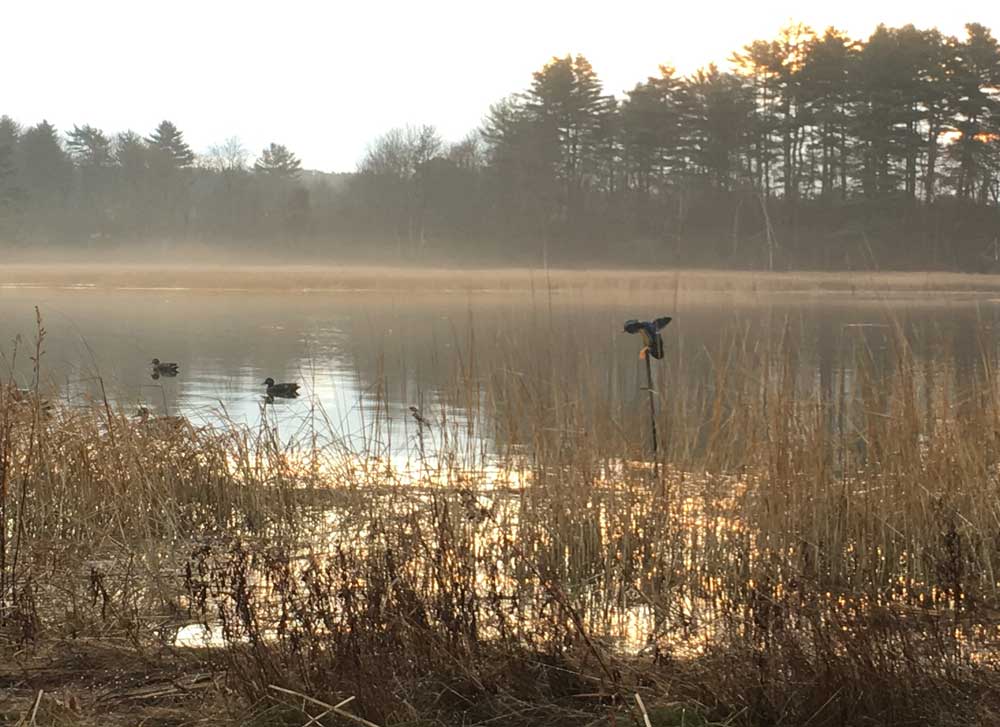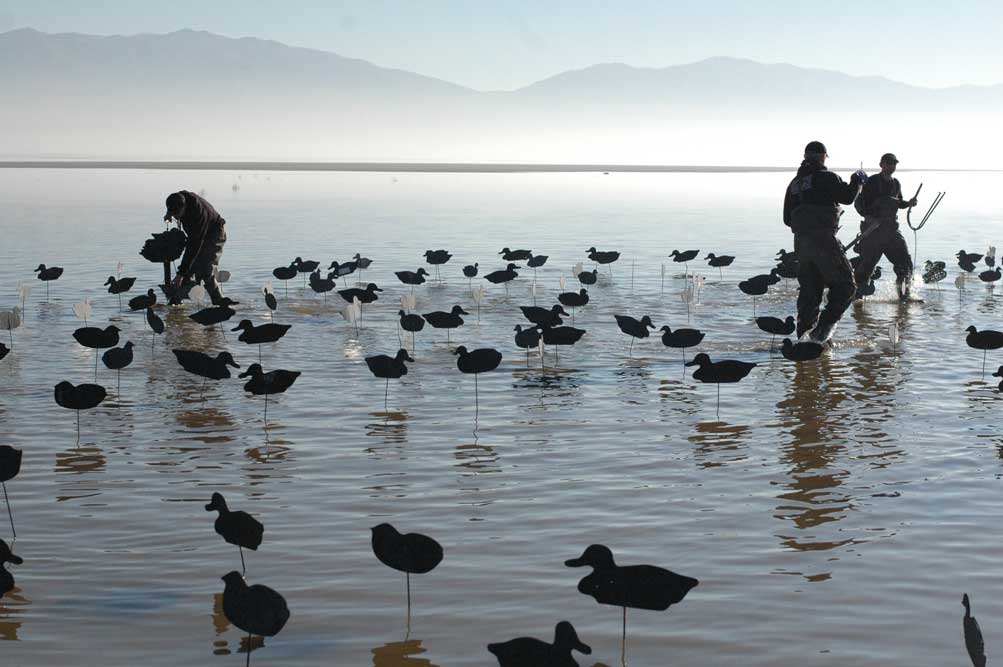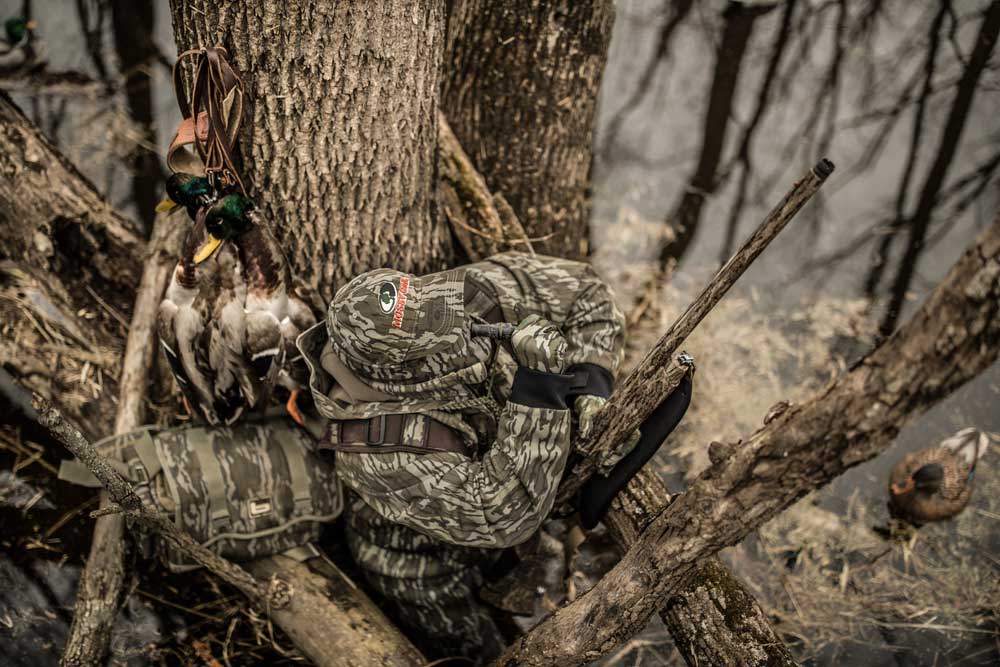How to bring even the most gun-shy ducks into gun range this season.
by Bob Humphrey
The phrase “decoy-shy ducks” is a bit of an oxymoron. After all, ducks are gregarious, preferring the company of others of their kind. Decoys are meant to present that. Yet waterfowl seem to become warier, and ducks develop a knack for distinguishing decoys from the real thing with each passing day of the season. If you want to stay in the game, you may need to do like the ducks and modify your behavior.

EQUIPMENT
Rafting
If some are good then more are better, right? That may be the case here. Those decoy-shy ducks might need a little extra reassurance that all is well. Snow geese are notoriously wary, even from day one, which is why those who hunt them often have layouts containing hundreds of decoys. You may not need that many but the more, the merrier.
Variety
While they prefer the company of others, ducks do seem to be somewhat selective about the company they keep. Some will come to any decoys but others seem able to distinguish by size and possibly even species, so it is not a bad idea to have a variety of decoys. Put the bigger blacks and mallards on one side and the smaller teal or woodies on the other. Maybe even add a few divers to outer, deeper areas.
Reality
This one stretches the boundaries of credibility a tad as under the right circumstances, ducks and geese will decoy to little more than a lump of mud and a stick, or rolled up newspaper. Still, the more realistic your decoys are, the more effective they should be. At the very least, keep them clean and in good condition, adding a little touch-up paint as needed. A relatively recent innovation is flocking, which adds a matte finish to your decoys, eliminating the shine that might otherwise dissuade wary waterfowl.
Super Size
Sometimes bigger really is better. Ducks have a poor perception of scale, and magnum decoys show up better, especially from a distance. They take up more space in the spread too so you may not need quite as many. Throw some standards out there as well to add more size variety.
Movement
Nothing you can do to your decoy spread is more effective than adding motion. In the old days, we used to tie a cord to one of the near decoys and run it back to the blind so we could yank on it, creating ripples in the water. Now there is all manner of motion decoys from floaters to flapping wings. The latter are so effective that they are actually prohibited in some states, so check the regulations. While less effective on puddle ducks, flagging also works on divers and sea ducks. And while they’re most often used for geese, kites are also an option.

TACTICS
Flexibility
Flexibility is a necessity if you want to be consistently successful throughout the season. You cannot use the same tactics two weeks into the season as you did on opening day. The ducks are out there somewhere, and they are going somewhere else. You just need to find them.
Relocate
Those ducks that used to pile into your spread now fly high overhead and pass you by. Pay attention to direction. Then spend some time looking over satellite imagery. Maybe they have abandoned the bigger ponds and lakes in favor of smaller, more remote backwaters. Or perhaps they’re passing the small ponds and rafting up in the bays, coves or lagoons on the big water. Get out and scout too. Beavers create roost ponds that may not show up on maps or photos.
Weather
As most every waterfowler knows, weather can influence behavior. The birds may be super wary on bluebird days but add some wind and rain and they will be more inclined to drop in to the nearest sign of companionship. Before a storm is also a good time to go. With their internal barometer, ducks can sense an approaching storm long before the first gray clouds roll in and will be feeding more aggressively.
Go Mobile
When the birds won’t come to you, sometimes you have to go to them. Abandon the big spreads and the comfortable blinds and go mobile. Try jump-shooting the local marsh or floating a stream. Slip up on potholes and farm ponds. It takes a little more effort but beats the boredom of sitting and waiting for ducks that may never come.

Calling
No discussion on outwitting wary waterfowl would be complete without some mention of calling. Just like turkey hunters, the biggest mistake duck hunters often make is calling too much. If you have ever had a chance to watch undisturbed ducks feeding, you've probably noticed they are well-mannered and don't do too much talking with their mouths full. Ducks quickly learn to associate loud calling, especially poor calling, with danger, and flare off. Keep your calling to a minimum, even if you've got a firm handle on the high-ball and feel confident with your feeding chuckle. While you can sometimes change the mind of reluctant early-season ducks with a cacophony of calling, it seldom works later in the fall.
Gun Gear
For a 12-gauge ammo that goes the extra mile for you, buy the Apex Mossy Oak Shadowgrass Habitat Blend. The TSS blend maximizes pattern density and virtually eliminates the possibility of cripples.






























